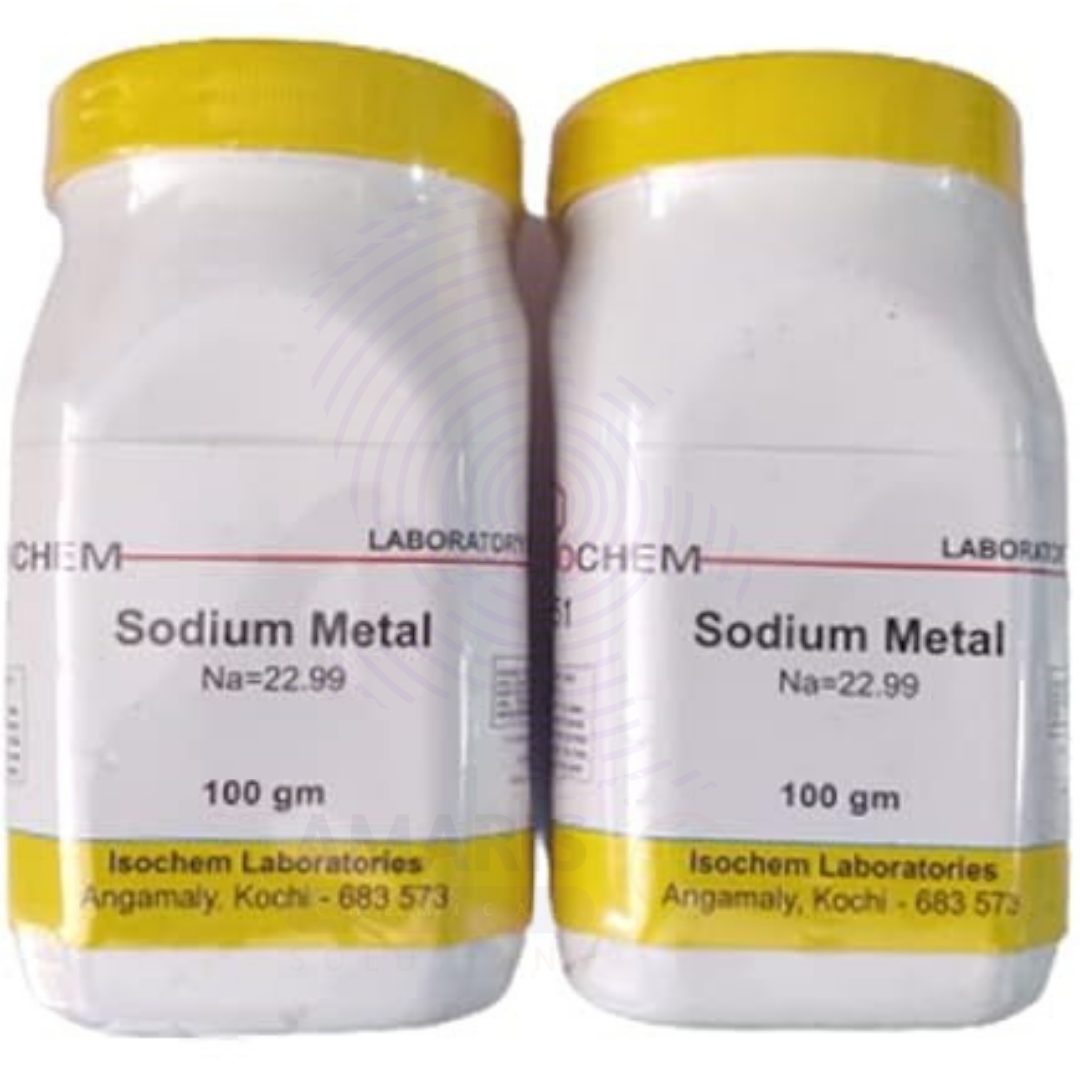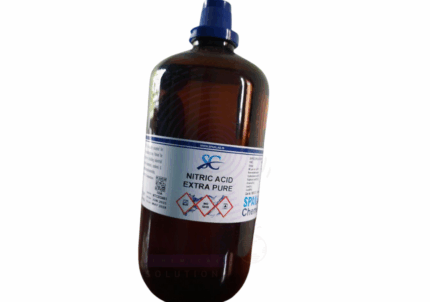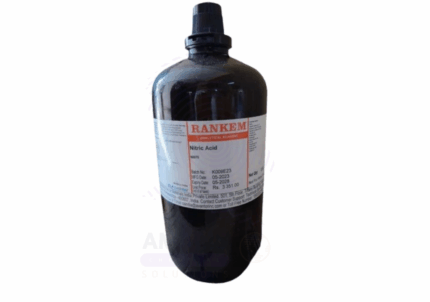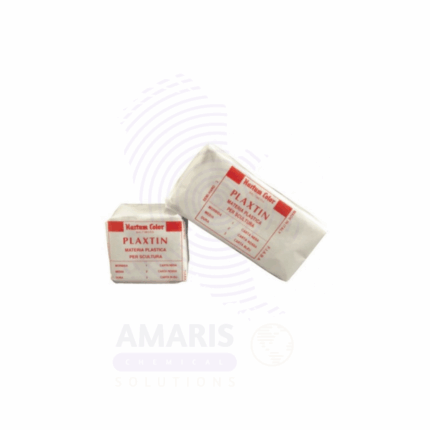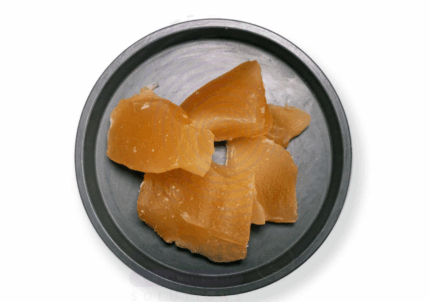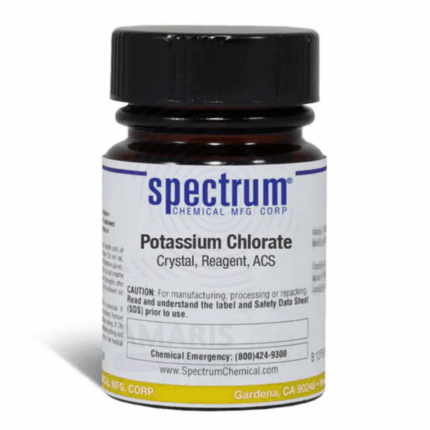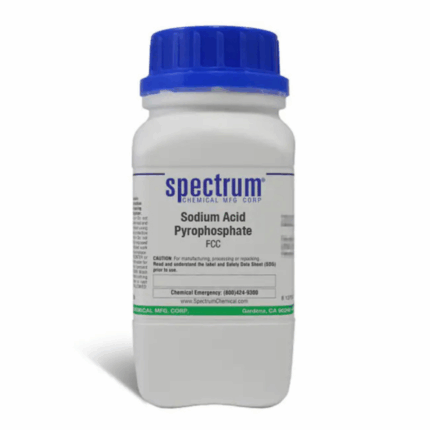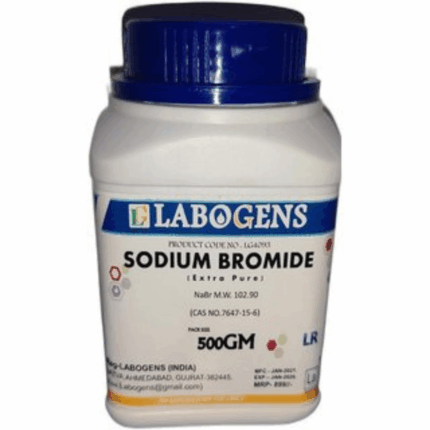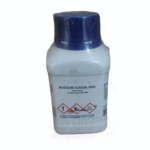
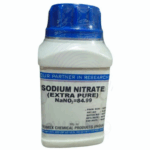
Sodium Metal Extra Pure
$ 17.20
Sodium Metal Extra Pure is a highly reactive, silvery-white metallic solid used extensively in laboratories and industries as a strong reducing agent and reagent in chemical synthesis. It is essential for producing sodium-based compounds and drying solvents. Due to its pyrophoric nature, it must be stored and handled under inert conditions such as mineral oil to prevent spontaneous ignition. It has significant uses in pharmaceuticals, organic synthesis, and metal processing but requires strict safety protocols because of its reactivity with water and air.
Sodium Metal Extra Pure
PRIMARY USES
- Analytical Reagent & Laboratory Applications:
Used as a strong reducing agent in chemical synthesis
• Employed in the preparation of sodium compounds and organosodium reagents
• Utilized for drying solvents by removing trace moisture - Chemical Manufacturing:
Essential in the production of sodium hydride, sodium alkoxides, and other sodium-based reagents
• Used in organic synthesis for deprotonation and reduction reactions - Pharmaceutical Industry:
Used as a reactant in the synthesis of various pharmaceuticals and intermediates - Metal Industry:
Used as a heat transfer agent in some specialized metal processing
• Applied in sodium vapor lamps production
SECONDARY USES
- Hydrogen Generation:
Reacts with water to generate hydrogen gas in controlled laboratory settings - Industrial Applications:
Used in the manufacture of synthetic rubber and dyes
• Employed in catalyst preparation and refining processes
1. Basic Identification Attributes
- Chemical Name: Sodium Metal
• CAS Number: 7440-23-5
• HS Code: 2805.19.00
• Molecular Formula: Na
• Synonyms:
- Metallic sodium
- Sodium (Na)
2. Physical & Chemical Properties
- Physical State: Soft, silvery-white metallic solid
Color & Odor: Silvery metallic, odorless
• Melting Point: 97.8 °C
• Boiling Point: 883 °C
• Density: Approximately 0.97 g/cm³ (lighter than water)
• Solubility:
- Reacts vigorously with water, producing sodium hydroxide and hydrogen gas
- Insoluble in organic solvents
• pH Level: Strongly alkaline on contact with water due to NaOH formation
• Vapor Pressure: Negligible at room temperature
• Flash Point: Highly flammable and pyrophoric in air
3. Safety & Hazard Attributes
Hazard Class (GHS Classification):
- Highly flammable metal (Category 1)
- Causes severe skin burns and eye damage (Category 1)
• NFPA Ratings: - Health: 3
- Flammability: 4
- Reactivity: 3
• Exposure Limits: - No specific OSHA PEL; avoid inhalation of dust or fumes
• Reactivity: - Reacts violently with water, acids, and moisture
- Pyrophoric: ignites spontaneously on contact with air or moisture
4. Storage & Handling Attributes
Storage Conditions:
- Store under inert atmosphere (e.g., mineral oil or argon) to prevent air and moisture contact
- Keep container tightly sealed in a cool, dry place
• Incompatible Materials: - Water, acids, oxidizing agents
• Container Type: - Specially designed airtight containers under mineral oil or inert gas
• Shelf Life: - Stable when stored properly under inert conditions
• Special Handling Requirements: - Use non-sparking tools
- Handle with gloves and face shield in a well-ventilated area
- Avoid all sources of ignition
5. Regulatory & Compliance Attributes
Regulatory Status:
- Listed under REACH, OSHA, EPA inventories
• Transportation Restrictions: - Classified as a hazardous material; transport under strict regulations for flammable solids
• Waste Disposal Method: - Dispose of by controlled reaction with isopropanol or under professional hazardous waste protocols
6. Environmental & Health Impact
Ecotoxicity:
- Reacts with water to form sodium hydroxide, which can be harmful in aquatic environments
• Persistence in Environment: - Does not persist as elemental sodium; rapidly reacts and neutralizes
• Carcinogenicity/Mutagenicity: - Not classified as carcinogenic or mutagenic
• Biodegradability: - Not biodegradable; inorganic metal
SAFETY PRECAUTIONS
Personal Protective Equipment (PPE):
• Use flame-resistant gloves and protective clothing
• Wear safety goggles and face shield
• Use respiratory protection in poorly ventilated areas
Handling:
• Handle under inert atmosphere or mineral oil
• Avoid contact with water, moisture, and ignition sources
• Use non-sparking tools and grounded equipment
Storage:
• Store in airtight containers under inert conditions, away from moisture and heat sources
FIRST AID MEASURES
Inhalation:
• Move victim to fresh air immediately
• Seek medical attention if respiratory distress occurs
Skin Contact:
• Remove contaminated clothing
• Rinse immediately with plenty of water for at least 15 minutes
• Seek urgent medical attention due to risk of severe burns
Eye Contact:
• Rinse cautiously with water for several minutes
• Remove contact lenses if present and easy to do
• Seek immediate medical attention
Ingestion:
• Do not induce vomiting
• Seek immediate medical attention
FIRE FIGHTING MEASURES
Flammability:
• Highly flammable, pyrophoric metal
Extinguishing Media:
• Use Class D fire extinguishing powders (e.g., dry sand, graphite powder)
• Do not use water or foam
Hazardous Combustion Products:
• Sodium oxides and corrosive fumes
Firefighter Protection:
• Wear full protective gear and self-contained breathing apparatus (SCBA)


 Preservatives(food)
Preservatives(food) Flavor Enhancers
Flavor Enhancers Acidulants
Acidulants Sweeteners
Sweeteners Antioxidants
Antioxidants Colorants(food)
Colorants(food) Nutraceutical Ingredients (food)
Nutraceutical Ingredients (food) Nutrient Supplements
Nutrient Supplements Emulsifiers
Emulsifiers
 Collectors
Collectors Dust Suppressants
Dust Suppressants Explosives and Blasting Agents
Explosives and Blasting Agents Flocculants and Coagulants
Flocculants and Coagulants Frothers
Frothers Leaching Agents
Leaching Agents pH Modifiers
pH Modifiers Precious Metal Extraction Agents
Precious Metal Extraction Agents
 Antioxidants(plastic)
Antioxidants(plastic) Colorants (Pigments, Dyes)
Colorants (Pigments, Dyes) Fillers and Reinforcements
Fillers and Reinforcements Flame Retardants
Flame Retardants Monomers
Monomers Plasticizers
Plasticizers Polymerization Initiators
Polymerization Initiators Stabilizers (UV, Heat)
Stabilizers (UV, Heat)
 Antifoaming Agents
Antifoaming Agents Chelating Agents
Chelating Agents Coagulants and Flocculants
Coagulants and Flocculants Corrosion Inhibitors
Corrosion Inhibitors Disinfectants and Biocides
Disinfectants and Biocides Oxidizing Agents
Oxidizing Agents pH Adjusters
pH Adjusters Scale Inhibitors( water)
Scale Inhibitors( water)
 Antioxidants(cosmetic)
Antioxidants(cosmetic) Emollients
Emollients Fragrances and Essential Oils
Fragrances and Essential Oils Humectants
Humectants Preservatives
Preservatives Surfactants(cosmetic)
Surfactants(cosmetic) Thickeners
Thickeners UV Filters
UV Filters
 Fertilizers
Fertilizers Soil Conditioners
Soil Conditioners Plant Growth Regulators
Plant Growth Regulators Animal Feed Additives
Animal Feed Additives Biostimulants
Biostimulants Pesticides (Herbicides, Insecticides, Fungicides)
Pesticides (Herbicides, Insecticides, Fungicides)
 Active Pharmaceutical Ingredients (APIs)
Active Pharmaceutical Ingredients (APIs) Excipients
Excipients Solvents(pharmaceutical)
Solvents(pharmaceutical) Antibiotics
Antibiotics Antiseptics and Disinfectants
Antiseptics and Disinfectants Vaccine Adjuvants
Vaccine Adjuvants Nutraceutical Ingredients (pharmaceutical)
Nutraceutical Ingredients (pharmaceutical) Analgesics & Antipyretics
Analgesics & Antipyretics
 Analytical Reagents
Analytical Reagents Solvents(lab)
Solvents(lab) Chromatography Chemicals
Chromatography Chemicals Spectroscopy Reagents
Spectroscopy Reagents microbiology-and-cell-culture-reagents
microbiology-and-cell-culture-reagents Molecular Biology Reagents
Molecular Biology Reagents Biochemical Reagents
Biochemical Reagents Inorganic and Organic Standards
Inorganic and Organic Standards Laboratory Safety Chemicals
Laboratory Safety Chemicals Specialty Laboratory Chemicals(Special Laboratory Equipment)
Specialty Laboratory Chemicals(Special Laboratory Equipment)
 Demulsifiers
Demulsifiers Hydraulic Fracturing Fluids
Hydraulic Fracturing Fluids Scale Inhibitors(oil)
Scale Inhibitors(oil) Surfactants(oil)
Surfactants(oil) Drilling Fluids
Drilling Fluids
 Dyes and Pigments
Dyes and Pigments Bleaching Agents
Bleaching Agents Softening Agents
Softening Agents Finishing Agents
Finishing Agents Antistatic Agents
Antistatic Agents
 Admixtures
Admixtures Waterproofing Agents
Waterproofing Agents Sealants and Adhesives
Sealants and Adhesives Curing Compounds
Curing Compounds Concrete Repair Chemicals
Concrete Repair Chemicals Anti-Corrosion Coatings
Anti-Corrosion Coatings
 Surfactants(cleaning)
Surfactants(cleaning) Builders
Builders Enzymes
Enzymes Solvents (Cleaning)
Solvents (Cleaning) Fragrances
Fragrances
 Electronic Chemicals
Electronic Chemicals Catalysts
Catalysts Lubricants
Lubricants Photographic Chemicals
Photographic Chemicals Refrigerants
Refrigerants Automotive chemicals
Automotive chemicals Pyrotechnic Chemicals
Pyrotechnic Chemicals
 Biodegradable Surfactants
Biodegradable Surfactants Bio-based Solvents
Bio-based Solvents Renewable Polymers
Renewable Polymers Carbon Capture Chemicals
Carbon Capture Chemicals Wastewater Treatment Chemicals
Wastewater Treatment Chemicals
 Pigments
Pigments Solvents(paint)
Solvents(paint) Specialty Coatings
Specialty Coatings Binders/Resins
Binders/Resins Additives
Additives Driers
Driers Anti-Corrosion Agents
Anti-Corrosion Agents Functional Coatings
Functional Coatings Application-Specific Coatings
Application-Specific Coatings
 Fresh Herbs
Fresh Herbs Ground Spices
Ground Spices Whole Spices
Whole Spices Spice Blends
Spice Blends Dried Herbs
Dried Herbs
 Leavening Agents
Leavening Agents Dough Conditioners
Dough Conditioners Flour Treatments
Flour Treatments Fat Replacers
Fat Replacers Decoratives
Decoratives Preservatives(baking)
Preservatives(baking)
 Plasticizers & Softeners
Plasticizers & Softeners Reinforcing Agents
Reinforcing Agents Adhesion Promoters
Adhesion Promoters Vulcanizing Agents
Vulcanizing Agents Antidegradants
Antidegradants Blowing Agents
Blowing Agents Fillers & Extenders
Fillers & Extenders Accelerators & Retarders
Accelerators & Retarders